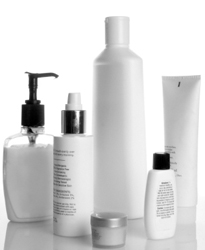I am sharing this Social Media resource from the web
http://teachingnaked.com/e-communication-and-guidelines/. I found it clear and easy to apply in the learning environment.
E-communications and Guidelines
E-communication Guidelines
Here are some easy ways to get students to pay
attention to your missives:
• Start with a policy (see below): Decide how
you will communicate and how often. Put this policy in the syllabus.
• Be consistent: Post on a regular basis. If
there is a Twitter or Facebook group, decide if participation is mandatory and
keep up with your own participation.
• Be dependable: Deliver on time! If you say
the paper topics will be posted at 10am, students will start checking at 9:45
and will hit “refresh” every 6 seconds. Post any delay by 10am.
• Don’t bombard: Limit communications to one a
day.
• Be brief: You can include a link with more
details. Twitter has a limit of 140 characters so it enforces brevity. (Both
text and Twitter make it easy to embed a web link.)
• Be transparent: Tell everyone before you tell
individual students. If you tell a student in the hall that you have decided to
make the test a take home, they will tweet this to everyone; it is better
coming directly from you.
• Use the right channel: Some forms of
e-communication are more passive and less urgent. You can post a news story as
your Facebook status, but if you want to remind students where the exam is, use
a more active communication (like tweets, email or text).
• Archive: You should keep a record of every
message (and the initial channel used) and keep this log posted either in a
blog or in an LMS.
Developing an E-Communication Policy
A clear e-communication plan for the semester
can stimulate your community of learners and make you more available to help
your students.
• Establish in the syllabus how you will
communicate. This should include your maximum e-mail response time and if you
accept chat, Skype, Facebook friend requests or other networks. How to
contact you is vastly more important to most students than your office hours.
• Limit the forms of communication. You
probably do not need to do both Facebook chat and Skype. Don’t try to do everything
at once. Ask students for casual feedback after class, but stick to your plan
for a while before you try different or multiple channels at once. Do not
randomly change your mode of communication.
• Create a schedule for yourself, follow
through for an entire semester and then re-evaluate. When is the best time or
the best day of the week to announce new assignments or provide your feedback
on the last test?
• Do not mix the personal and the professional.
• It is fine, and even useful, to use multiple
methods of communication as long as you are clear and consistent. You might,
for example, let students know that e-mail is used for announcements and
information about the readings, but that you will Tweet study questions. You
could just as easily reverse this, but be clear and consistent.
Students are used to filtering (i.e. blocking) certain stimuli so it is
essential to let students know that information coming on their phone can
affect their grade.
Template:
The best way to contact me is: ________________
(email, FB, Google+, LinkedIn)
I will respond to e-mail (or FB chat, messages
etc.) within _____ hours,
except on ___ or between ________ (9pm and 9am
etc.)
I also accept chat, Skype, Facebook friend
requests or other networks.
I do/do not accept friend requests on Facebook,
but I appreciate your connections on LinkedIn etc.



